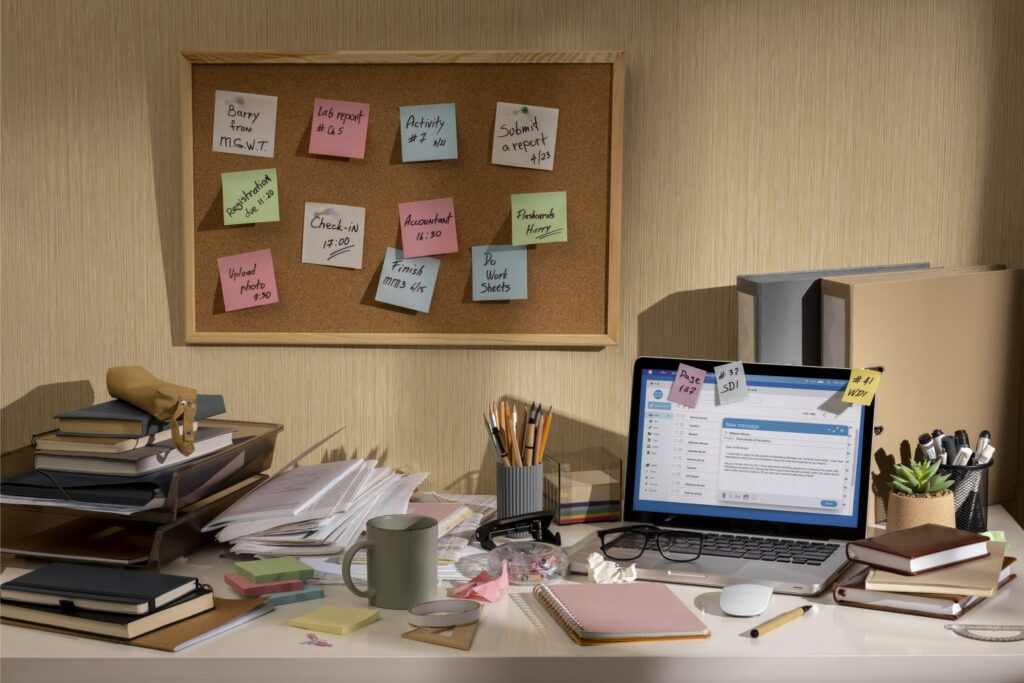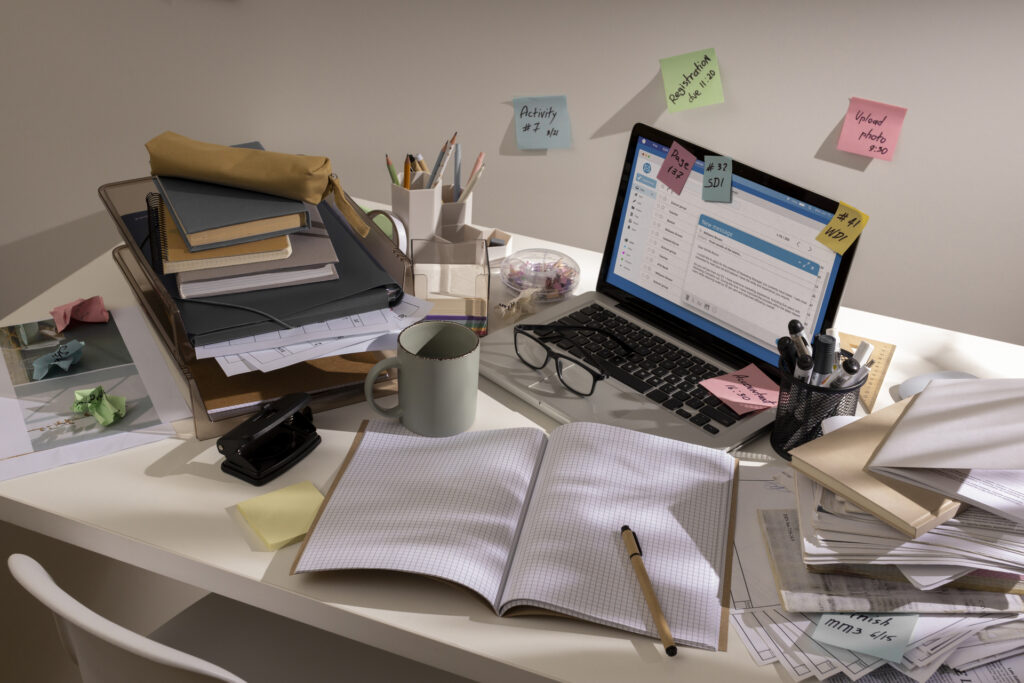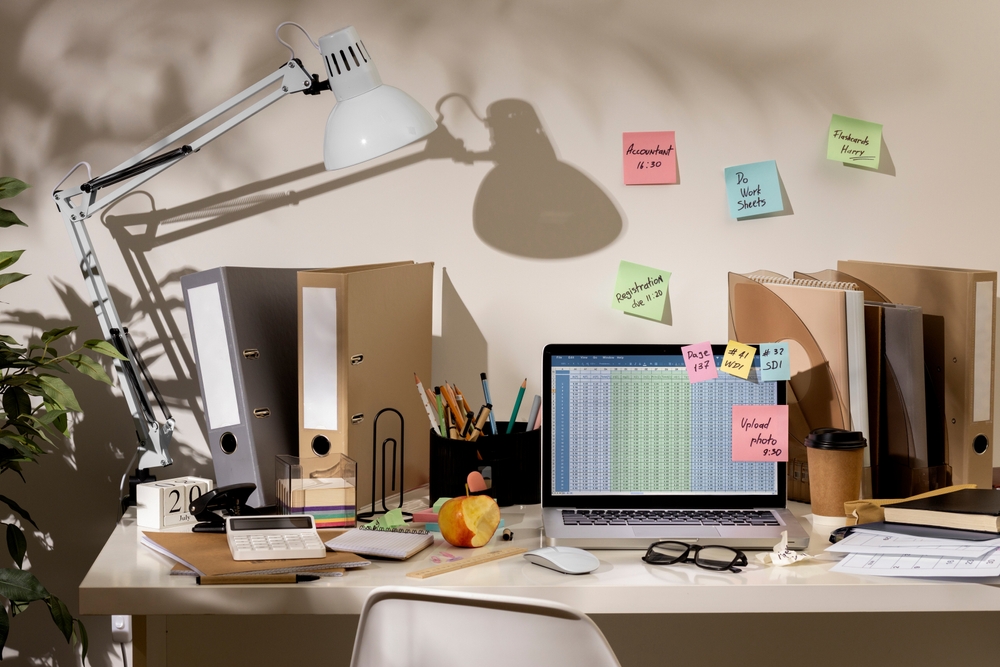How to Create a Clutter-Free Workspace
A messy workspace doesn’t just look bad—it can negatively impact morale, productivity, and efficiency. Organizing office spaces with smart storage solutions, taming unsightly cables and wires, and implementing routine clean-up sessions help teams operate smoothly.
Personal items can make workspaces feel cozy, but they should be kept to a minimum to minimize clutter. Setting organizational guidelines and providing team members with the tools they need to stay organized can also help.
1. Create a Clutter-Free Workspace

A clean workspace is the key to better focus. A cluttered environment distracts the mind and can make it hard to complete tasks or find needed tools. It can also be mentally exhausting and lead to a feeling of disorganization and anxiety. Fortunately, a well-organized office can eliminate these problems and help improve employee productivity and satisfaction.
A pristine work environment communicates professionalism and competence, engendering confidence in clients, coworkers, and superiors. In contrast, a messy workplace can erode trust and cause stakeholders to question an organization’s abilities and attention to detail.
The key to a clutter-free workspace is a consistent routine. Establishing a schedule of tidying up on a weekly basis and incorporating technology to streamline the process ensures that your workspace is always in good working condition. Using a digital task management app, for example, can reduce clutter by eliminating the need to maintain physical reminders like sticky notes. Streamlining storage solutions can also declutter your space by reducing the number of items you have on your desk and keeping crucial documents organized and accessible.
Eliminate unnecessary items by donating or throwing away what you don’t use or need. Invest in drawer organizers and storage containers to keep items from getting lost or misplaced. And implement a filing system to give each paper clip and receipt a designated home, making it easy for employees to locate essential items.
2. De-clutter Your Desk

Clutter in your workspace makes it hard to focus on work, creating a distraction that can lead to decreased productivity. Organizing your desk can help you find documents quickly, which allows you to complete tasks more efficiently. In addition, a clutter-free desk can also help you feel more calm and capable during the workday, which can be beneficial for your mental health.
Start by taking a day to declutter your desk, use desk pad or whatever surface you use to work. Set aside 15 to 30 minutes to clear away everything that doesn’t belong on your desk, including empty mugs, old coffee and snack wrappers, extra pens, post-it notes, and other items that create visual distractions. After clearing your space, place any items that you need or use on your desk (like a laptop, notebook, and pen) in their designated spots. Everything else should be put into a “To Keep,” “To Archive,” or “To Throw” pile, depending on what can be safely stored elsewhere.
Once your workspace is decluttered, commit to maintaining it. Tidying up your desk at the end of each day and setting a schedule for periodic evaluations, such as weekly or monthly, can prevent a mess from building up over time. In addition, implementing a system for filing important files, deleting emails you don’t need, and storing documents on cloud storage can all help you achieve a clutter-free digital workspace.
3. Create a Clutter-Free Storage Area
When files, supplies and paper clutter build up in a workspace, it creates a visual distraction that can distract your attention and hinder productivity. It also can pose a safety risk, especially if items are obstructing walkways or taking up valuable desk space. This is why it’s so important to optimize storage spaces and declutter often.
The best way to do this is to empty out any drawers or storage areas you have and sort through what’s there. Keep items you need frequently, discard those you don’t, and reorganize as needed. Using storage solutions like drawer organizers, binders, and filing systems can help you organize items so they’re easy to locate and put away. Creating clear labeling on containers or boxes is also helpful. This allows you to quickly spot what you need and makes it easier for others to find things, as well.
Another simple way to reduce clutter is to practice a “one in, one out” policy when it comes to adding items to your workspace. For example, if you bring in a new notebook, pen or other item, make sure you remove an old one to avoid overcrowding. This is especially important in shared work spaces, where maintaining an organized environment is vital to smooth teamwork and collaboration. Practicing minimalism in your workspace can lead to higher productivity and a more calming, focused mind.
4. Create a Clutter-Free Corner
Unused corners of your home can be transformed into useful spaces to meet a variety of needs. For example, you can convert a corner in your living room into a cosy reading nook complete with a comfy chair and throw blankets, install shelving or a bookcase to store your favourite books, and add a floor lamp for adequate lighting. If you enjoy crafting, consider installing a craft table and adding storage solutions to keep your supplies organized.


